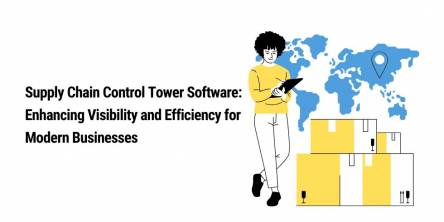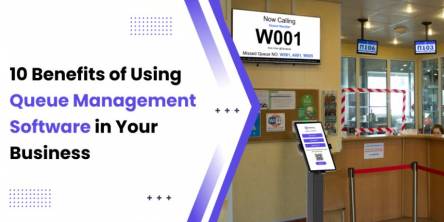Navigating Change: Harnessing Relationship Mapping for Successful Transitions

In today's fast-paced business world, change is a constant. The successful management of that change relies on strategic processes and the right tools. In this article, we'll explore the importance of relationship mapping in managing these changes effectively.
Understanding the Art of Navigating Change
Change is par for the course in any organization. From organizational restructuring, mergers, or simple policy updates, change is all-encompassing. However, managing this change requires a delicate balancing act.
In navigating change, the goal is to minimize disruption and resistance, while maximizing understanding and buy-in from team members. While all team members have a role to play, leaders of the organizations bear a significant portion of navigating the change.
An acute understanding of team dynamics and relationships is key for leaders. Leveraging tools such as relationship mapping can aid in successful change navigation.
Incorporating relationship mapping provides necessary insight into the way the team interacts and could provide pointers on the path of least resistance to adopt changes.
The Crucial Role of Relationship Mapping in Change Management
Relationship mapping gives an overview of the relationships within an organization. This includes who influences whom, who trusts whom, and potentially, who might resist a planned change.
An effective relationship mapping does not only focus on direct reports or hierarchical relationships; it also encapsulates informal relationships. These may also have a substantial influence on team dynamics.
Change agents, those who are to implement the change, draw on this map to guide their actions. Identifying likely resistors and influencers helps tailor the approach towards these individuals or groups.
Thus, understanding the relationships within an organization, via mapping, is crucial in effectively managing change.
Key Processes in Harnessing Relationship Mapping for Successful Transitions
To begin harnessing relationship mapping, it is paramount to gather as much information as possible about the relationships in your team. This would involve conducting surveys, observing interactions, and engaging in conversations.
With collected data, begin to plot the relationships, noting the strength, nature, and influence of each team member. Include formal and informal relationships as both play significant roles.
Critical events such as meetings or project collaborations can provide valuable insights into the dynamics of your team. Observing or even participating in these events can aid in developing a comprehensive relationship map.
Routing changes through these key individuals or groups can result in a smoother transition compared to a top-down approach. This is the very essence of harnessing relationship mapping.
Potential Obstacles and Mitigating Risks via Relationship Mapping
As with any strategic tool, relationship mapping is not without potential obstacles. Misunderstanding or misrepresentation of relationships is one potential risk. This might translate to flawed strategies.
It is therefore critical to ensure that gathered data is accurate and up-to-date. Regular reviews and updates of your relationship map are necessary as dynamics within the team might change over time.
Furthermore, transparency is key. Measures should be taken to foster an environment of trust where team members feel secure and comfortable sharing their observations or concerns.
Being mindful of these potential obstacles and mitigating them effectively ensures that relationship mapping can provide valuable insights and aid in smoother transitions.
Taking Stock: Real-World Relationship Mapping Case Studies
Several organizations have reported success in implementing relationship-mapping strategies for change management. These organizations span from tech start-ups to multinational corporations. The commonality? Effective use of relationship mapping.
For example, a tech company experiencing rapid expansion managed to maintain teamwork and minimize disruption by utilizing relationship mapping to guide its growth. By identifying key players and influencers, they managed to integrate new team members smoothly.
These case studies provide practical demonstrations of how relationship mapping can be harnessed for successful change management, reinforcing its value in the business realm.
Altogether, relationship mapping holds an integral role within the field of change management. With valuable insights, informed strategies, and prudent management, not only can change be navigated but also fostered into a cornerstone of growth.
Similar Articles
Simplify wealth management with advisor-directed trusts—separate roles, tailored investments, and expert oversight for efficient and flexible asset growth.
Let's face it — IT costs are eating your budget, and your CFO is giving you that look again. The one that says, "Find cuts or I will."
Sponsorship platforms are critical in scaling partnership programs in today's fast-paced digital world. Leveraging advanced sponsorship management software allows businesses to seamlessly manage their sponsorship activities, streamline processes, and optimize relationships with partners.
In today’s fast-paced world, businesses are constantly searching for ways to make their supply chains more efficient. Whether it’s managing stock levels, keeping customers happy, or reducing costs, there’s no room for delays or mistakes
Learn how Passive RFID tracking revolutionizes event management with seamless check-ins, real-time attendee insights, and enhanced security. Transform your next event!
The demands of the modern world dictate that a firm must provide its customers with excellent experiences. An essential aspect of this process, which is often randomly overlooked, however, remains how companies handle and organize queues
Discover how sustainable practices and technology in fleet management reduce costs, cut emissions, and drive eco-friendly operations for a greener future.
Boost your business success with CRM strategies. Learn how to enhance customer relationships, streamline operations, and drive performance with key insights.
Discover effective strategies to reduce employee turnover, improve retention, and build a motivated workforce by enhancing work culture, management, and compensation.









